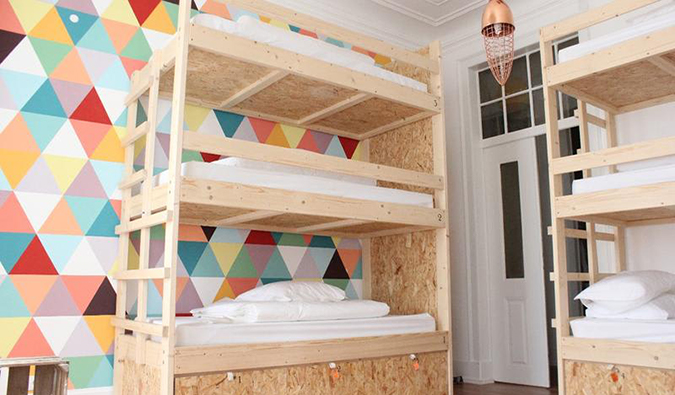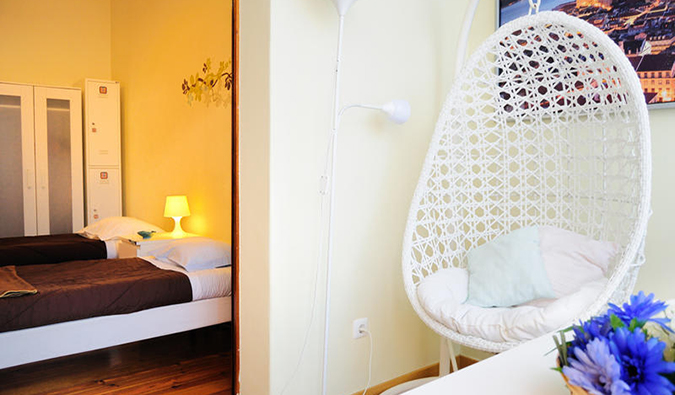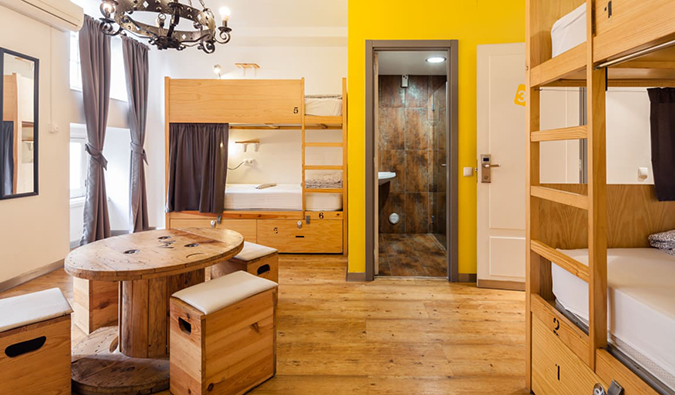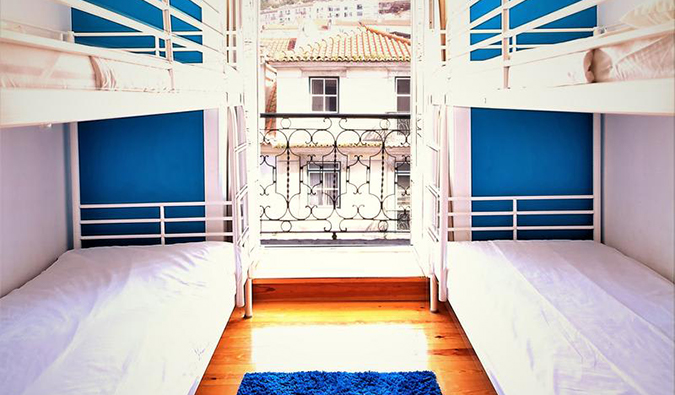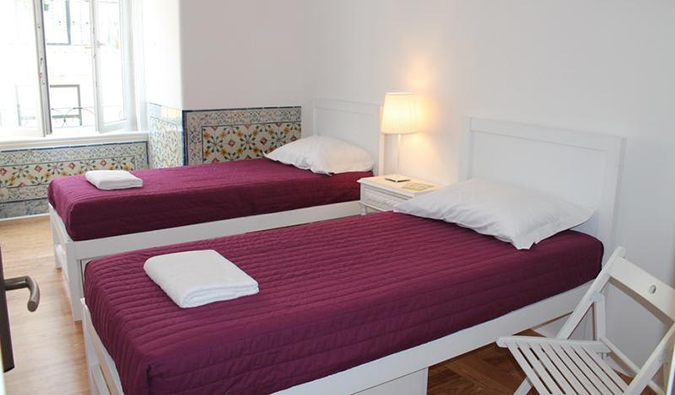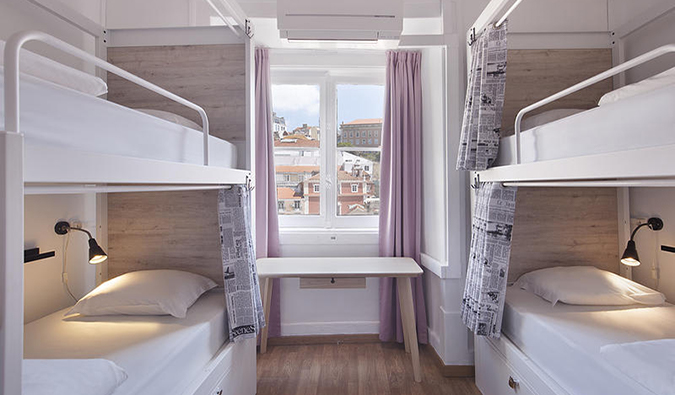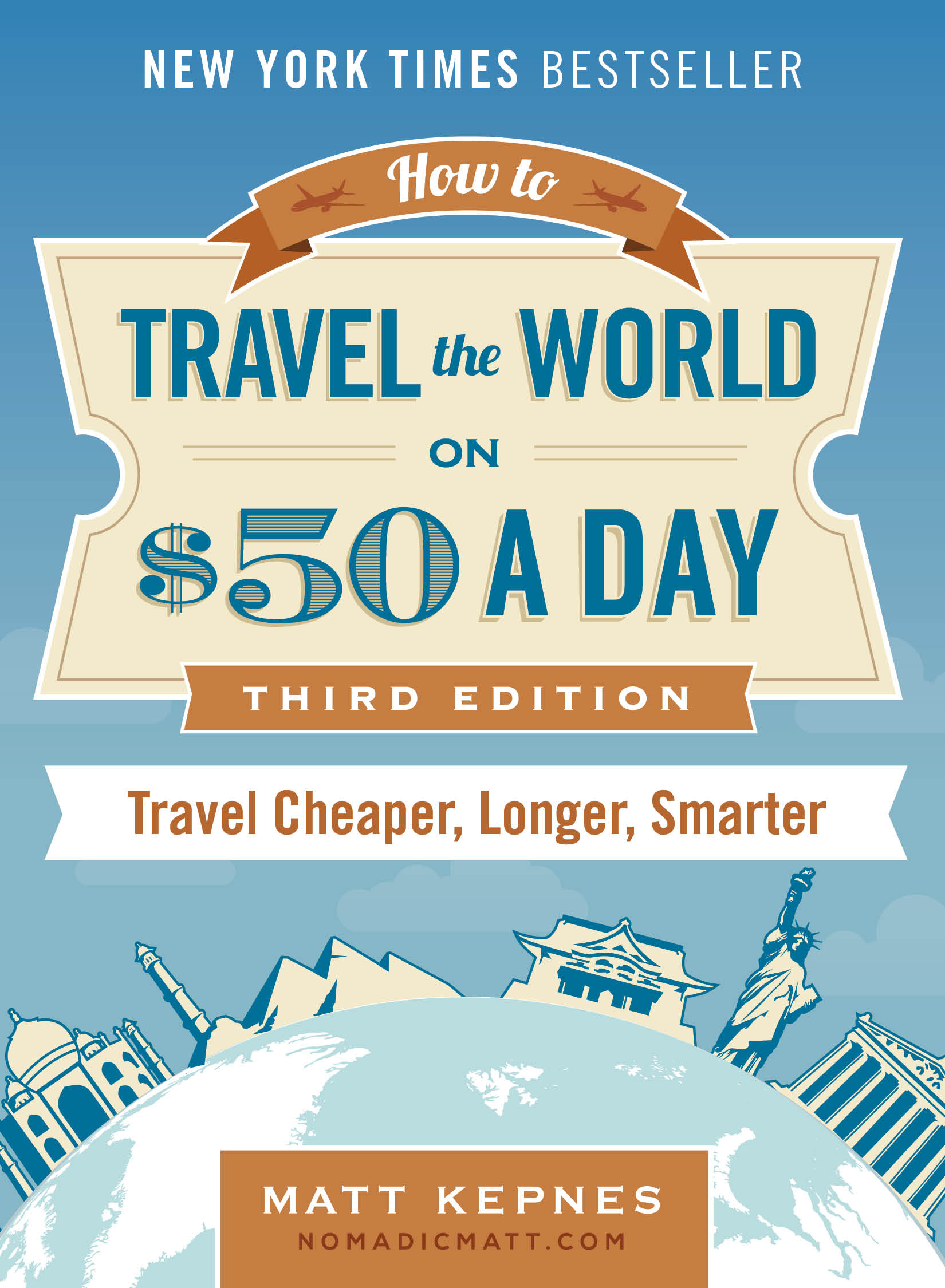
Posted: 2/18/2019 | February 18th, 2019
London is one of my recent favorite cities in the world. I always liked London but it wasn’t until I spent a few weeks there last summer that I fell in love with London.
I didn’t want to leave.
London is a sprawling city, covering 607 square miles, and home to over eight million people.
While the city may be expensive (though, like any big city, it has lots of free things to do there), it’s popularity means there are lots of hostels in the city. Hundreds upon hundreds.
I can’t tell you how many hostels I’ve stayed in over the years (Dozens at least. I stayed in six alone on my last trip!) but, with so many hostels to choose from, here is my list of the best hostels in London.
It will help you avoid spending time figuring out what hostels on Hostelworld really as great as the reviews say.
14 Best Hostels in London
1. Generator
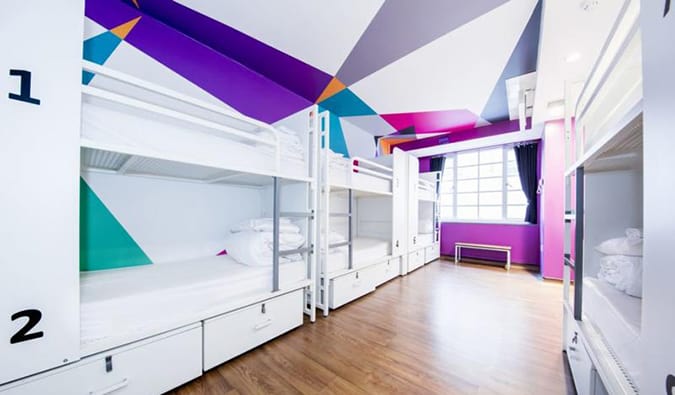
This location is Generator’s first hostel (it’s now a huge chain spread all over Europe), and it’s housed in an old police station. You can’t go wrong with this chain. Like most of their hostels, Generator London has lots of modern, upscale fixtures, a huge common area, a bar, and a restaurant (no common kitchen though). There’s also a pool and foosball table. The beds are plush but there are not many charging plugs in the walls, so you’ll have to fight for space. It’s one of the cheapest hostels in London, which is rare considering its location near King’s Cross Station. It’s a short walk from Regents Park, Covent Garden, and the British Museum.
Beds from £14 GBP ($18 USD). Privates from £60 GBP ($76 USD).
—-> Click here to book your stay at Generator London!
2. Clink78

Fun fact: Clink78 is housed in an old courthouse building in King’s Cross where British rock band The Clash once stood trial. Some of the rooms are even former jail cells! There’s a huge downstairs kitchen / bar area where you can work, eat, socialize, and drink. They host a lot of unique events, like solo traveler meet-ups and DJ + Bingo nights. The dorms are kind of cramped (that eight bed really should of been a six bed) but they have curtains on the side, individual lights and outlets, and lockers. Bathrooms are super clean too. I really liked this hostel. It’s one of the better ones in London (hence why it’s on this list).
Beds from £12 GBP ($15 USD). Privates from £44 GBP ($56 USD).
—-> Click here to book your stay at Clink78!
3. Astor Hyde Park

This hostel is in a quiet neighborhood right off Hyde Park, and within walking distance to some of London’s best museums like the Natural History Museum and the Victoria & Albert. There’s a great party vibe, and the friendly hotel staff will help you arrange tours and activities. Plus the £1 breakfast can’t be beat! I love the old wooden décor of the building as you feel more like you’re in a home than a hostel. The dorms are huge and there’s plenty of room to sprawl out. Try to avoid the rooms on the upper floors as the hostel has no elevator.
Beds from £16 GBP ($20 USD). Privates from £70 GBP ($89 USD).
—-> Click here to book your stay at Astor Hyde Park!
4. Wombats City Hostel London

The Wombats City Hostel is located in a beautiful refurbished building that used to be a sailor’s hostel. This led to the current décor and the wooden bunk beds that are, unfortunately, a bit squeaky. The rooms are a nice size, and there are activities planned most nights of the week (like walking tours and karaoke). The hostel’s central location is one of its best features – it’s super close to London’s main attractions like the Tower Bridge, the Tower of London, and City Hall. It’s got a good vibe to meet people in but it could use a kitchen!
Beds from £20 GBP ($25 USD). Privates from £110 GBP ($140 USD).
—-> Click here to book your stay at Wombats City Hostel London!
5. Astor Museum Hostel

This award-winning hostel is right in front of the British Museum and a few minutes from Piccadilly Circus, Trafalgar Square, and Covent Garden. The rooms are basic, but it’s a good value, and there’s a cozy lounge and kitchen area. Partake in breakfast for just £1. Free dinners are also offered frequently. It’s not as quaint as their Hyde Park branch but I find this location better!
Beds from £18 GBP ($23 USD). Privates from £75 ($95 USD).
—-> Click here to book your stay at Astor Museum Hostel!
6. The Walrus Hostel
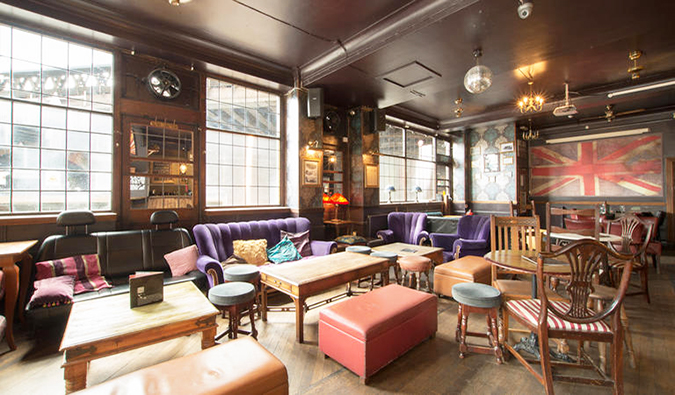
This hostel close to Parliament and Big Ben has a busy pub downstairs where hostel guests get a discount! The breakfast is simple but free and there’s a decent sized kitchen to cook your own food. The entire place has a quaint Old-English feel, with wallpapered rooms and antique-style furnishings. Request a room on the lower level if you don’t want to climb too many stairs as this place also has no elevators! The common area with its eclectic mix of furnture is my favorite part of this hostel.
Beds from £15 GBP ($19 USD). Privates from £60 GBP ($76 USD).
—-> Click here to book your stay at The Walrus Hostel!
7. St. Christopher’s Village

This hostel chain has eight London locations, but I like the Village venue the best – especially for being so near the Borough Market (an absolute haven for foodies). It’s also a short walk to the London Eye and Tower Bridge. This is a pretty big party place, with an outdoor terrace, regular beer pong nights, and musical performances. There are a ton of social events to get you well acquainted with your fellow travelers! It’s the first hostel in London to have cozy pod-style beds. They are actually super comfortable and provided one of the best sleeps I had in the city!
Beds from £14 GBP ($18 USD). Privates from £58 GBP ($75 USD).
—-> Click here to book your stay at St. Christopher’s Village!
8. The Dictionary

The Dictionary is in the artsy, hip neighborhood of Shoreditch in East London (one of the best spots for eating and nightlife in the city). The hostel itself has a great rooftop terrace, a bar for drinks, and they offer free breakfast. There’s a big kitchen in case you want to cook too. The rooms are bare but the beds are fairly comfortable, they’re spacious, and kept clean!
Beds from £15 GBP ($19 USD). Privates from £73 GBP ($93 USD).
—-> Click here to book your stay at The Dictionary!
9. Palmers Lodge Swiss Cottage

The owners have repurposed a beautiful old house into this hostel. The interior has traditional English décor in the lobby area (including a decorative knight in shining armor). The beds are comfortable and have privacy curtains. There is an elevator, but the top floors can get hot in the summer so I’d avoid them. Though it is small, the kitchen has everything you need, and the downstairs bar is great to sit and have a beer. I’m a huge fan.
Beds from £17 GBP ($22 USD). Privates from £64 GBP ($81 USD).
—-> Click here to book your stay at Palmers Lodge Swiss Cottage!
10. YHA London

YHA has six London locations, but the Earls Court and Oxford Street locations are my favorite. These hostels both have dorms and private rooms. The rooms are typically very clean and safe, and both locations host activities every week (including free walking tours and movie nights). The Earls Court location is in a recently refurbished Victorian building. The Oxford Street location is colorful and cheerful, but not great for families, as it does get pretty loud in the evenings.
- YHA London (Oxford Street) – Beds from £18 GBP ($23 USD). Privates from £45 GBP ($57 USD).
- YHA London (Earls Court) – Beds from £17 GBP ($22 USD). Privates from £55 GBP ($70 USD).
—-> Click here to book your stay at YHA London (Oxford Street)!
—-> Click here to book your stay at YHA London (Earls Court)!
11. Hostel One
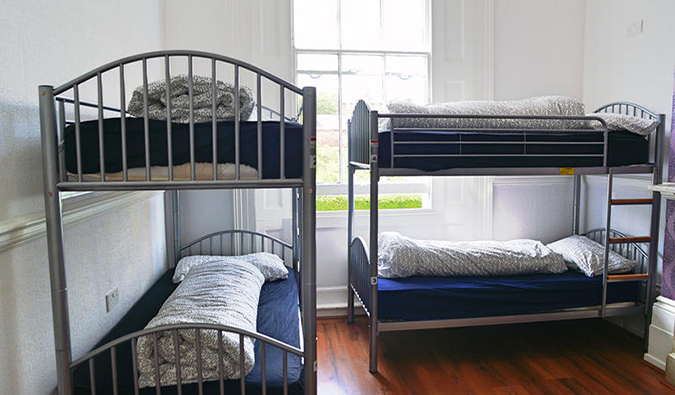
This hostel is awesome. Guests get a free homemade dinner each night and can join in on organized activities (including drinking games). It’s a very social hostel with friendly staff and a good vibe. The rooms are a bit cramped and pillows a bit flat but the vibe here more than makes up for the beds! There are two locations (one in Camden and one in Notting Hill).
- Hostel One Camden – Beds from £20 GBP ($25 USD). Privates from £80 GBP ($102 USD).
- Hostel One Notting Hill – Beds from £19 GBP ($24 USD). Privates from £92 GBP ($117 USD).
—-> Click here to book your stay at Hostel One Camden!
—-> Click here to book your stay at Hostel One Notting Hill!
12. Barmy Badger

I’ve always had a good night’s sleep here. It may be the memory foam mattresses or the cushy pillows, but this hostel has most everything you need. The beds each have reading lights, USB plugs, and power sockets. A nice breakfast of cereals and fresh fruit is included, and there’s free coffee and tea all day. They sometimes host BBQ parties and other events.
Beds from £22 GBP ($28 USD). Privates from £60 GBP ($76 USD).
—-> Click here to book your stay at Barmy Badger!
13. Park Villa
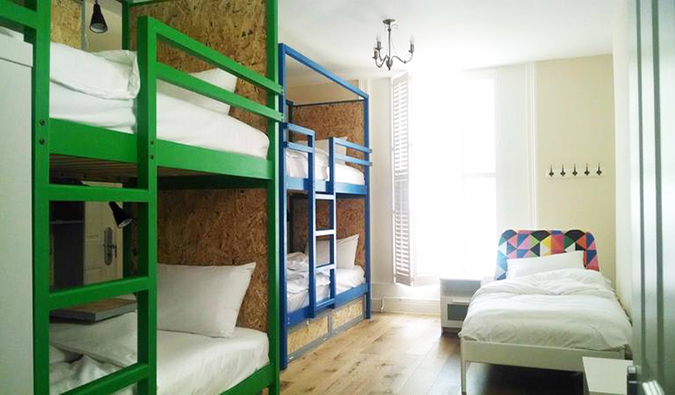
Park Villa is a boutique hostel in a grand Georgian Regency style estate in the Mile End Old Town of London. It looks amazing from the outside, and there are nice common spaces; the rooms have comfy beds, but are nothing special. It’s a bit farther from the city center, but it’s quiet, clean, and well maintained. There is a kitchenette and you can pay £3 for a continental breakfast. Free tea and coffee are usually available, and the staff is knowledgeable and provides great London sightseeing tips. You can easily get to Oxford Circus, Holborn, and Tower Hill from here.
Beds from £19 GBP ($24 USD). Privates from £57 GBP ($72 USD).
—-> Click here to book your stay at Park Villa!
14. SoHostel

This large hostel (I kept getting lost in the hallways) is in Soho with a rooftop “tiki”-style bar, nightly drink specials, quiz nights, live music, and karaoke. They have a big common space too with a restaurant has some cheap food (like £5 pizzas) and beer. The beds are comfy and the showers super clean. It was an awesome place to stay and I even extended my time there. If you book directly with them, they often have special rates.
Beds from £25 GBP ($32 USD). Privates from £55 GBP ($70 USD).
—-> Click here to book your stay at SoHostel!
London has a lot of hostels but instead of spending hours trying to figure out where to stay, this list of the best hostels in London will save you time and ensure you got a great place to stay.
My all time best hostel in London on this list is Clink 78 or SoHostel.
Got a hostel not on this list? Add it in the comments!
Book Your Trip to London: Logistical Tips and Tricks
Book Your Flight
Find a cheap flight by using Skyscanner or Momondo. They are my two favorite search engines because they search websites and airlines around the globe so you always know no stone is left unturned.
Book Your Accommodation
You can book your hostel with Hostelworld. If you want to stay somewhere other than a hostel, use Booking.com as they consistently return the cheapest rates for guesthouses and cheap hotels. I use them all the time.
Don’t Forget Travel Insurance
Travel insurance will protect you against illness, injury, theft, and cancellations. It’s comprehensive protection in case anything goes wrong. I never go on a trip without it as I’ve had to use it many times in the past. I’ve been using World Nomads for ten years. My favorite companies that offer the best service and value are:
- World Nomads (for everyone below 70)
- Insure My Trip (for those over 70)
Looking for the best companies to save money with?
Check out my resource page for the best companies to use when you travel! I list all the ones I use to save money when I travel – and I think will help you too!
Looking for more information on visiting London?
Check out my in-depth destination guide to London with more tips on what to see, do, costs, ways to save, and much, much more!
Photo credits: 2, 2, 3, 4, 5, 6, 7, 8, 9, 10, 11, 12, 13, 14
The post My 14 Favorite Hostels in London in 2019 appeared first on Nomadic Matt's Travel Site.

